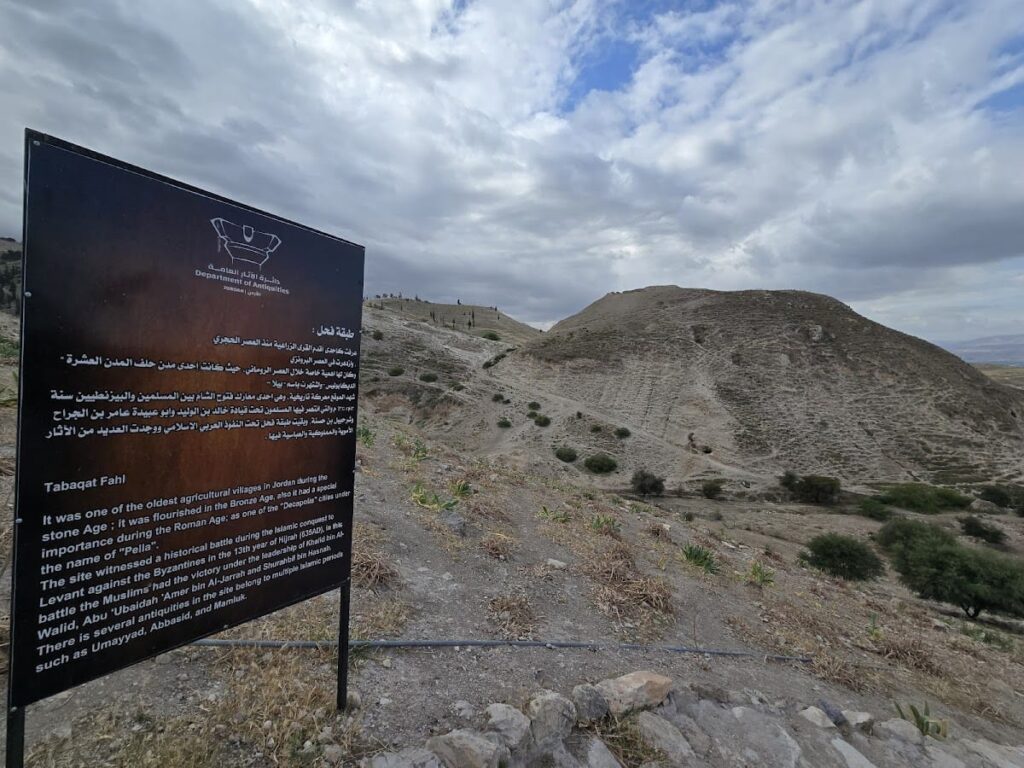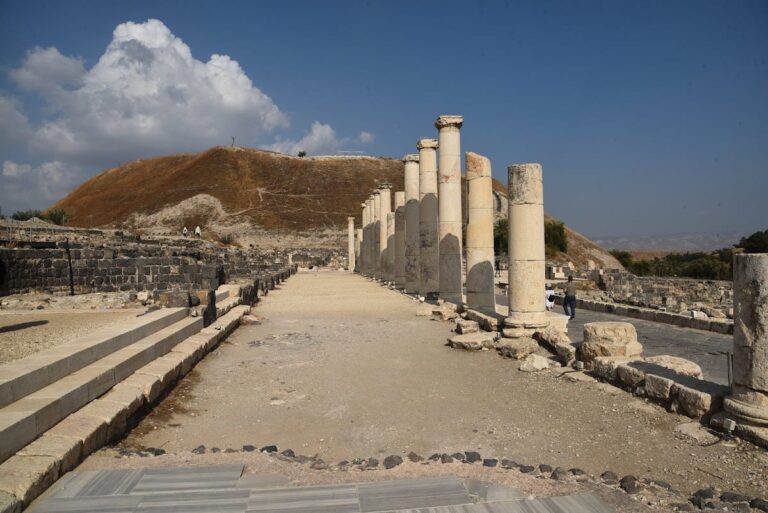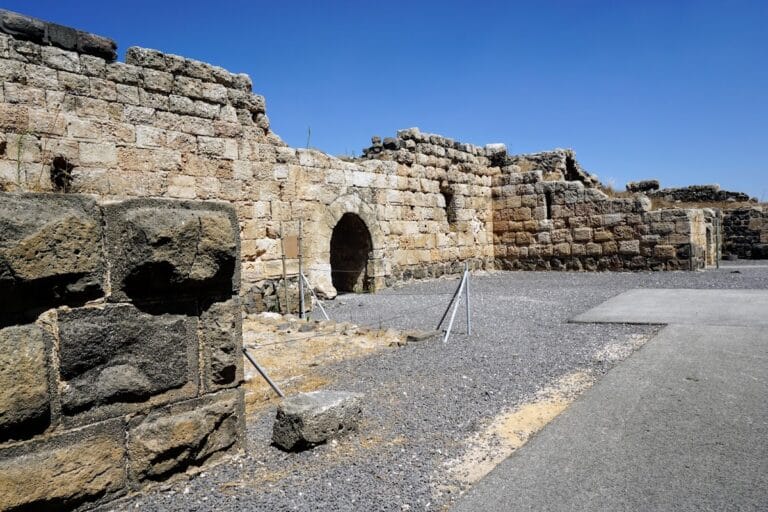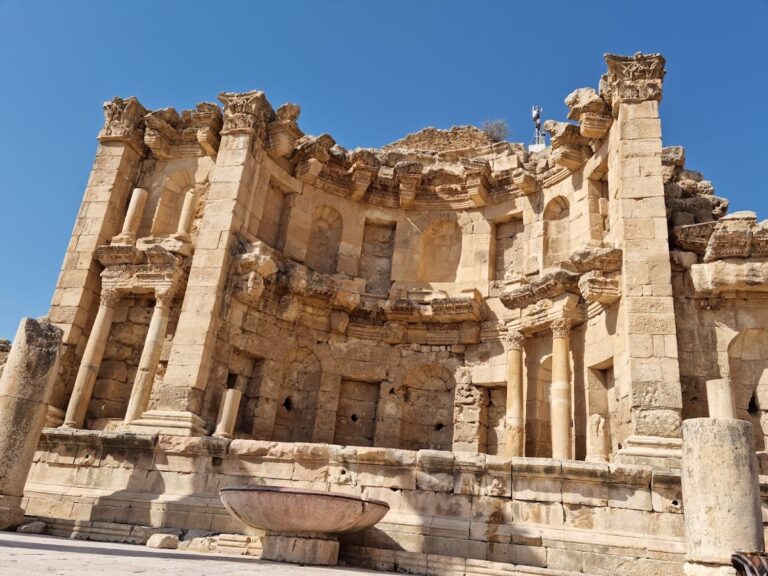Pella: An Ancient City in Jordan with a Rich Historical Legacy
Visitor Information
Google Rating: 4.2
Popularity: Low
Google Maps: View on Google Maps
Official Website: international.visitjordan.com
Country: Jordan
Civilization: Byzantine, Early Islamic, Greek, Medieval Islamic, Roman
Remains: City
History
Pella is located in northwest Jordan, near Tabqet Fahel, in the eastern hills of the Jordan Valley. The site was originally known as Pihilum or Behel in ancient Semitic texts dating back nearly 4000 years. It was established close to a rich water source and occupied continuously from the Neolithic period through the Islamic era.
In the Bronze and Iron Ages, Pella developed as a fortified settlement with significant construction phases, including city walls dating from around 3400 to 3200 BCE. The city experienced destruction in the late Hellenistic period, likely caused by Hasmonean military campaigns around 83-82 BCE. After this, the Roman general Pompey restored the city, integrating it into the Roman province of Syria.
From 63 BCE, Pella became part of the Decapolis, a league of ten Hellenistic cities under Roman control. It was the northernmost city in this group. During the 1st century CE, Pella served as a refuge for early Jewish-Christian communities fleeing Jerusalem amid the Jewish-Roman wars. The city minted coins from 82/83 CE through the early 3rd century CE.
The Byzantine period marked Pella’s peak growth. It became an episcopal see by 451 CE and hosted several large churches, including a cathedral-like basilica. The city was part of the province of Palestine Secunda and maintained a grid-like urban plan with shops and public buildings. A fortified castle on Tel al-Hosn hill housed a cavalry unit during this time.
In 635 CE, Pella was the site of a decisive battle between Muslim Arab forces and the Byzantine army. Following the conflict, the city surrendered peacefully and was incorporated into the early Islamic Caliphate. Under Islamic rule, Pella retained Christian religious functions and commercial activity but declined economically due to changes in trade routes.
A major earthquake in 749 CE caused widespread destruction, collapsing many two-story stone and mudbrick houses. This disaster led to a reduction in the settlement’s size and a partial relocation of its population. During the Islamic period, new structures such as markets, workshops, and caravanserais (known as khans) were added near the civic basilica.
In the Mamluk era, the site included a stone mosque with a pulpit (minbar), residential buildings, and a large cemetery on the hilltop. Despite natural disasters and later construction, many Roman and Byzantine structures survive, sometimes integrated into newer buildings.
Remains
Pella’s archaeological remains reveal a city with a planned layout and diverse construction styles spanning millennia. The site includes temples, churches, houses, a small Roman odeon (a hall for performances and meetings), and bathhouses. Many structures are partially excavated and preserved in situ.
The earliest city walls date to the Early Bronze Age, built with stone and mudbrick. Large mudbrick fortifications from the Middle Bronze Age also survive. A Canaanite temple uncovered between 1994 and 2003 features monumental stone staircases and was constructed on the site of a later Serapis sanctuary. Only the grand staircases remain visible today.
Byzantine Pella contained at least three basilicas: a western church on the hilltop, a large civic complex church in Wadi al-Jirm likely serving as a cathedral, and an eastern church on Jebel Abu al-Khas. These churches incorporated Corinthian columns and peristyle courtyards, architectural elements typical of the period.
A fortified Byzantine castle stood on Tel al-Hosn hill. Its stone foundations of the first floor remain, while upper brick structures have been lost. The castle included numerous horse stables, indicating the presence of a cavalry unit.
The city’s grid-like streets were lined with shops and large buildings during the Byzantine era. Luxury residences from the Hellenistic period contained frescoes and statues. Coins minted in Pella depict a hexastyle temple with grand staircases, a colonnaded main street, and a monumental fountain (nymphaeum), although the actual temple and stair remains have not been found.
During the Islamic period, a large market and workshop area developed adjacent to the civic basilica. North of the main tell, a double-courtyard complex interpreted as khans (caravanserais) included glass workshops. Mamluk remains include a stone mosque with a minbar, residential complexes, and a large cemetery on the flattened hilltop.
Preservation varies across the site. Some Roman and Byzantine buildings survive integrated into later constructions, while earlier layers remain buried or partially damaged by earthquakes and subsequent building activity.










